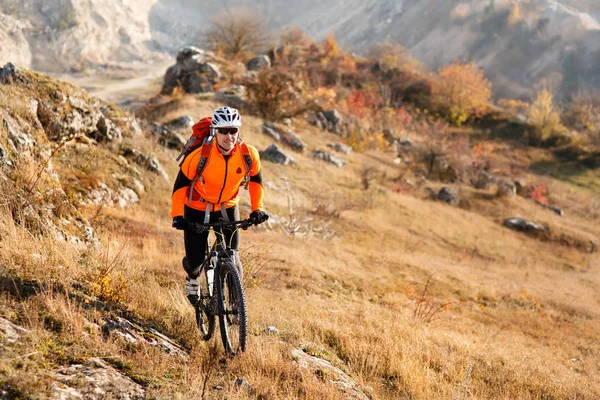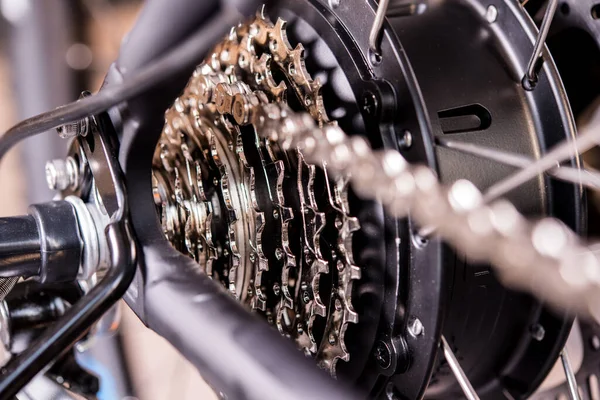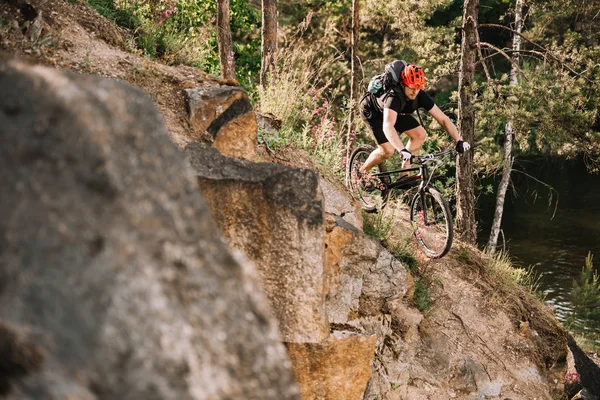Electric bikes are slowly becoming the most preferred option for commuting to work, exercising, and going for adventures.
Yet, some riders wonder “Can an electric bike go uphill?” Yes, but that is simply a brief answer. Electric bikes are well-equipped to handle hilly terrain and inclines. However, how effectively they manage the most challenging hills will be determined by the type of motor and its size.
Electric bikes also provide some mechanical aid to make more oversized loads, longer kilometers, and steeper slopes less painful than pedaling alone. Because of this, most riders, especially mountain bike riders or outdoor adventurers, are raising questions concerning uphill biking.
In this article, you will find out how an e bike performs for uphill climbing, as well as parameters and features to consider before going up climbing hills.
How Is an Electric Bike Useful To Climb Steep Hills?

Unlike a normal bike, an e bike is equipped with an electric motor and battery that supports your pedaling as you climb, making ascent simpler and faster.
As you ride up steep hills, the battery powers the engine (motor), allowing the electric bike to effortlessly navigate the terrain.
The pedaling and throttle combo is effective and will quickly help you handle steep hills. Some e bikes even enable you to climb hills without pedaling using only the throttle.
However, suppose your daily commute or favorite workout route involves a steep hill that you won’t be able to pedal easily; you should acquire an extra motor to make it more controllable. With a pedal-assist motor, you can drive up and sail down any slope quicker.
Ideal Speed for Climbing Steep Hills
The ideal speed of an electric bike to ride on steep hills ranges from 18 mph to 25 mph without needing any effort from the user. This should be plenty for users who want to speed up their ride or commute to work without breaking a sweat.
If you want to travel quicker, you’ll have to pay a lot more and learn how to change the motor on your e bike.
Most e bikes have a top speed of 20 mph to 25 mph or less; therefore, alterations may be necessary.
You should be aware that it may take some time to become used to riding an electric bike. It can require a few rides before you feel comfortable going at top speeds.
Features To Consider for Biking Steep Hills
If you’re looking for an e bike for riding steep hills, you should look for one with all the qualities you’ll need to make the journey easier.
Before making a decision, consider the following:
1. Motor Styles
When choosing an e bike for handling steep hills, it is best to opt for an e bike with an electric motor with sufficient battery storage, power output, and torque.
Hub motors and mid-drive motors are the two most prevalent types of e bike motors. Both of these motors can deliver supplemental power.
- Hub motor: As the name suggests, they connect to the hub of your bicycle’s front or rear wheel. This implies that they are not part of your bicycle’s main drive system. Instead, they function by supplementing power at the region of one or both wheels.The simplicity with which hub motors may be fitted and serviced is something riders appreciate.Sometimes, you can buy a wheel with the hub motor already attached or easily attach the motor yourself.
- Mid-drive motor: Mid-drive motors connect to your bike via the bottom bracket of your cranks and engage with the primary drivetrain.They provide the most torque while carrying heavy items or climbing steep hills. They do, however, require some getting used to when you first start.With a mid-drive motor, your front sprocket system is reduced to a single chain ring that powers the system, but you still have access to the many speeds on the back ring. This means you may either gear up for speed or down for torque.Changing gears, however, can be difficult since you must match the cadence of the engine with your pedaling. Because the mid-drive motor is incorporated into the bicycle’s transmission, you must avoid changing gears on a steep incline.
2. Power Supply
There are several factors to consider concerning an electric bicycle motor’s power supply.
These are its output in Watts (W), its battery capacity in Watt-hours (Wh), and its torque in newton meters (Nm).
- Watt: Hub motors typically have a maximum output of 250 W, while mid-drive motors can typically provide 350-750 W of power. However, the greatest mid-drive motors on the market generate more power of 1000-1500 W and have a throttle cable for more control.The amount of throttle you use will undoubtedly reduce your motor’s range, but you may adapt to the higher power demands that steep terrain brings by updating the battery to the greatest amount of storage it can support.
- Watt-Hours: The length of time or distance your motor can traverse (Watt-Hour) is determined by the battery’s size and the quantity of power that it can hold.Pushing the throttle wide open to get reasonable speeds can deplete the energy you have left.Extending the life of a battery may be accomplished by supplying as much power as possible through the pedals, selecting efficient gears, and balancing your need for speed with your requirement to cover distance while using the throttle.
- Torque: Torque is the applied force of the power given by pedaling and the electric motor in proportion to the rotation of the bicycle’s wheels.On flat areas, all that is required to propel the bicycle is enough power to overcome inertia.On a steep hill, the torque must be adequate to resist inertia and gravity’s power pulling the bike down the hill.Generally, an electric bicycle motor with less than 70 Nm of torque should not be used to climb steep terrains. There are variants of e bikes available to provide 160 Nm or more.
3. Electric Bike Weight
An electric bike weighs between 20 kg to 35 kg, making it heavier than a standard cycle. The extra weight is due to the battery, motor, and control systems.
Heavy motorcycles should be avoided since they are difficult to operate when the battery runs out. Furthermore, if you weigh more than 275 pounds, a 500-watt pedal-assist e bike is advised as a minimum.
4. Gear

If you’re riding an electric bike uphill, make sure it has at least seven gears (particularly if you’re utilizing a pedal-assist).
To make it easier on yourself, shift the bike into the lowest gear when cycling uphill.
Best Electric Bikes Options for Steep Hills
The RadRover is the greatest pick among all available options. It isn’t the most powerful device available; however, at 750 W, it can easily handle steep hills.
It features seven gears, allowing you to maximize torque on climbs while maintaining speed everywhere else.
It also has large tires and mechanical disc brakes to keep you in control. It’s nice that the engine, frame, and batteries are all warrantied.
If you want an e bike with both speed and torque, the FLX Trail is one of the best options available. This e bike can go at speeds ranging from 20 to 35 mph.
There are a few additional alternatives if you’re searching for a more versatile all-terrain e bike.
Look no farther than the Addmotor MOTAN if you want to ride your e bike across the snow, gravel, sand, mud, and other difficult terrains.
This bike is also excellent for climbing steep slopes, although not to the level of the FLX Trail.
Remember that no matter what brand or type of bike you buy, it must have a robust frame, commonly made of aluminum alloy, and a comprehensive suspension system.
Effective Biking Techniques
There are various riding methods, tips, and tactics that can help you spend less energy on hill climbs. Utilizing them will allow you to move longer and quicker.
These techniques include the following.
- Body position: Your body posture is determined by the steepness of the hill and the terrain you are riding on. A neutral stance is acceptable when cycling on mild hills. However, when riding on steep grades, adjust your body weight forward, lower your chest to the bars, and bend your elbows. This will increase aerodynamics and keep the back wheel traction.
- Pedaling cadence: It is critical to maintain the pedaling cadence and torque while utilizing a mid-drive motor so you do not lose momentum.
- Line choice: This is linked to maintaining the pedaling cadence. It’s best to look approximately 5 meters ahead to see what’s ahead and select a path that’s smooth, clear of obstructions, and easy to climb.
- Tire style and pressure: Tires give grip when riding, and the correct amount of tread and pressure from the tires, paired with pedal assist, will simply keep you moving ahead. The appropriate tire pressure is determined mostly by your tire selection.
- Gear selection: When riding an e bike uphill, you must use the proper gears to transfer the most amount of power to the ground. Generally, you should pick a lower gear that produces the most torque to propel the e bike ahead. You’ll be well on your way to a trouble-free uphill ride if you combine the proper gear with a steady pedaling cadence.
Riding Downhill

Once you’ve completed the climb, it’s typically time to contemplate the downward option. While regenerative braking might help conserve the battery’s life and slow the bike down, it can also be harmful to an inexperienced rider.
Maintain control of your pace by keeping a tight grip on the handlebars to avoid veering, which might result in a crash.
Conclusion: Can eBikes Go Uphill?
Climbing or descending a steep hill is simple when you use the correct type of electric bike, which has an efficient motor system, a long-lasting battery, suitable safety measures, and also acquire effective riding tactics.
